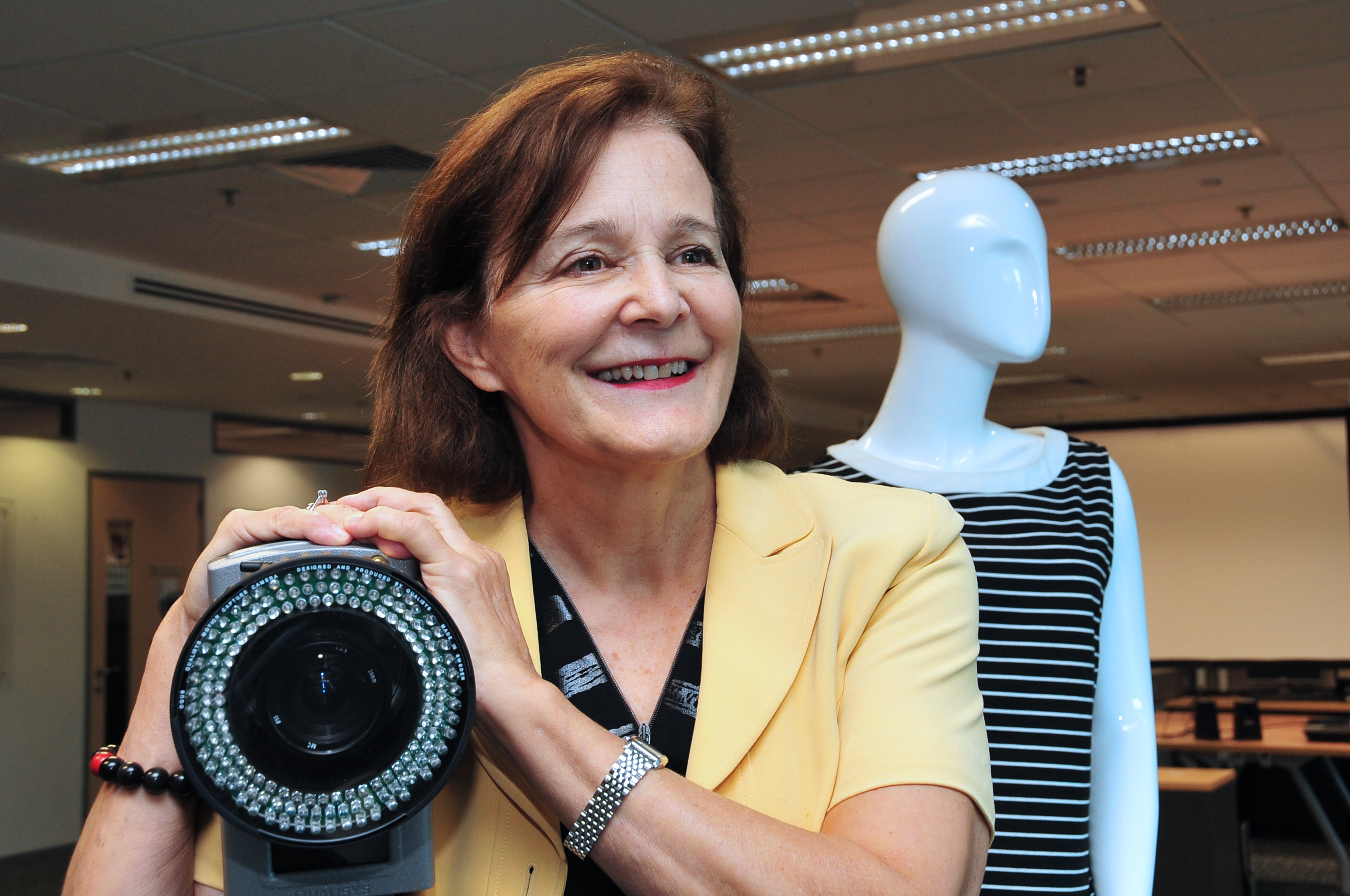Prof. Nadia Magnenat Thalmann has pioneered research into virtual humans over the last 30 years. She obtained several Bachelor’s and Master’s degrees in various disciplines (Psychology, Biology and Biochemistry) and a PhD in Quantum Physics from the University of Geneva in 1977. From 1977 to 1989, she was a Professor at the University of Montreal in Canada.
From 1989 to 2010, she has been a Professor at the University of Geneva where she founded the interdisciplinary virtual worlds research group MIRALab. She was the coordinator of several European Research Projects, among them the European Center of Excellence InterMedia and the European Center of Excellence 3D Anatomical Human. She is also Editor-in-Chief of the Visual Computer Journal published by Springer Verlag, co-Editor-in-Chief of the journal Computer Animation and Virtual Worlds published by Wiley, Associate Editor of IEEE Transactions on Multimedia and editor of many other scientific journals. For her scientific and artistic work, she has received several awards, among them the nomination of Woman of the Year in Montreal in 1988, the nomination as Computer Pioneer in the hall of fame at the Computer Museum of Padeborn in Germany and the selection of her work on Virtual Marilyn at the Modern Art Museum in New York in 1988. She is a life member of the Swiss Academy of Engineering Sciences (SATW).
Together with her PhD students, she has published more than 550 papers on virtual humans and virtual worlds with applications in 3D clothes, hair, body modelling and medical simulation of articulations.
She has been invited to give more than 350 keynote speeches in various institutions and organizations, among them the World Economic Forum in Davos. She has been Vice-Rector at the University of Geneva from 2003-2006. In 2009, she received a Doctor Honoris Causa from the Leibniz University of Hanover in Germany. In May 2010, Professor Nadia Thalmann received the prestigious Distinguished Career Award from the European Association for Computer Graphics. In June 2010, she received an Honorary Doctorate of the University in Ottawa in Canada. She is presently Professor and Director of the Institute for Media Innovation (IMI) at Nanyang Technological University, Singapore and Director of MIRALab at the University of Geneva, Switzerland.
Q. Tell us about your current research focus?
Ans. I am working on two main domains: One is the understanding of the external world by a robot or a computer with 3d cameras and microphones as for example, the recognition of people, their emotions, gestures, the surrounding sound, etc. We also work on the modeling of the natural simulated reaction of a social robot to different situations from the surrounding world.
The second research goal is to simulate a society where real humans will mix with virtual humans in an immersive environment. As an example, we are simulating distant real players who play with 3d glasses volleyball in a virtual volleyball setting against or together with computer players who look real. We are also working on this project on the feeling of realism and presence when a real user uses 3d glasses and have the impression he/she is playing with real players in a real place.
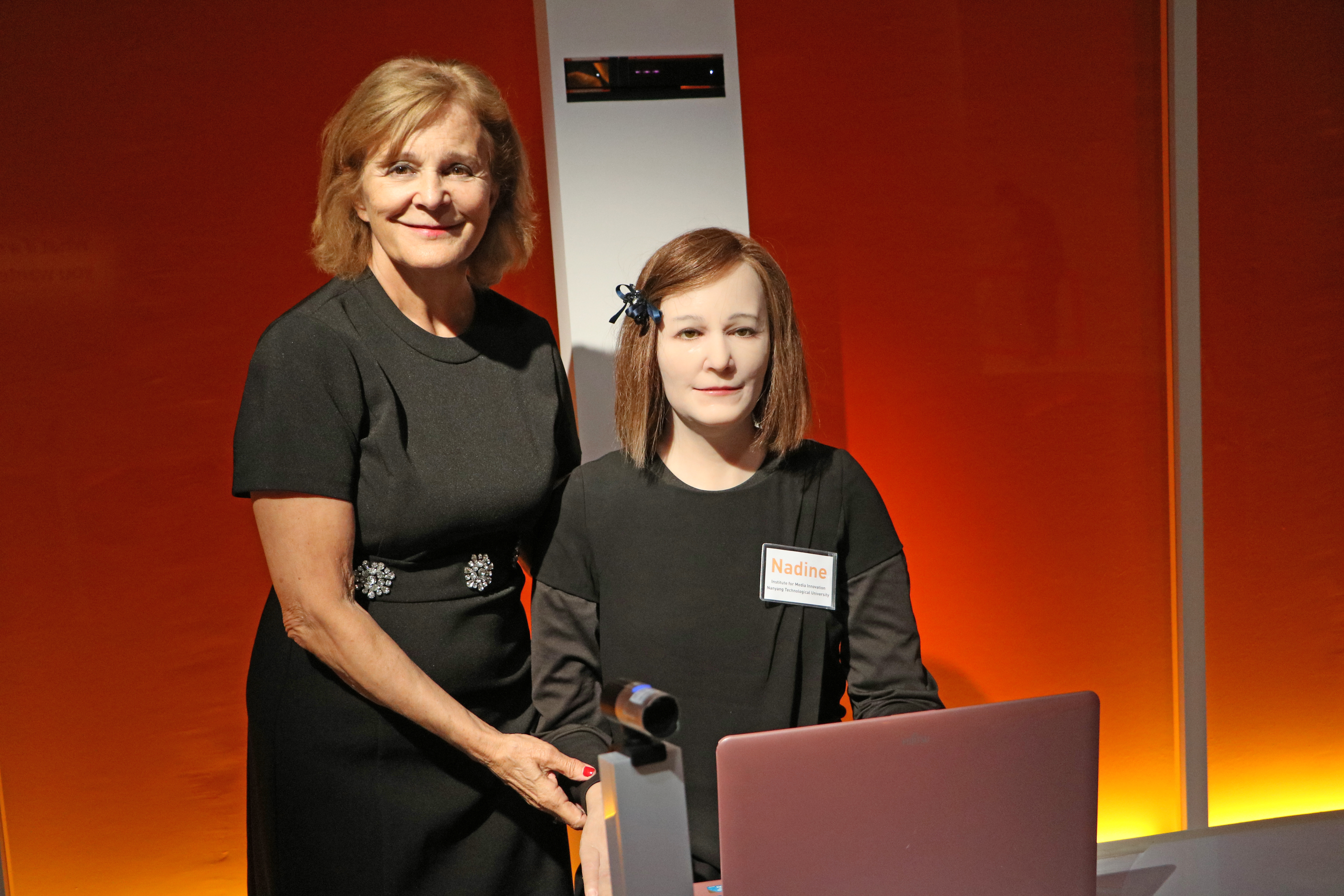
Q. What’s so special about the social robot Nadine?
Ans. Nadine is a social robot that can remember facts (has a memory) and emotions of people, can generate simulated emotions, and can speak several languages. Her attitude is very complex as all these features are linked together. For example, if we are impolite to Nadine, she will remember and maybe when she sees you again, she will not be very happy to see you again and will have a voice that is not so friendly as well as a very reserved attitude. She has a complex integrated behavior. In addition, she is autonomous that means that she can answer all kind of questions on her own. We are using a lot of ai techniques to perform these abilities.
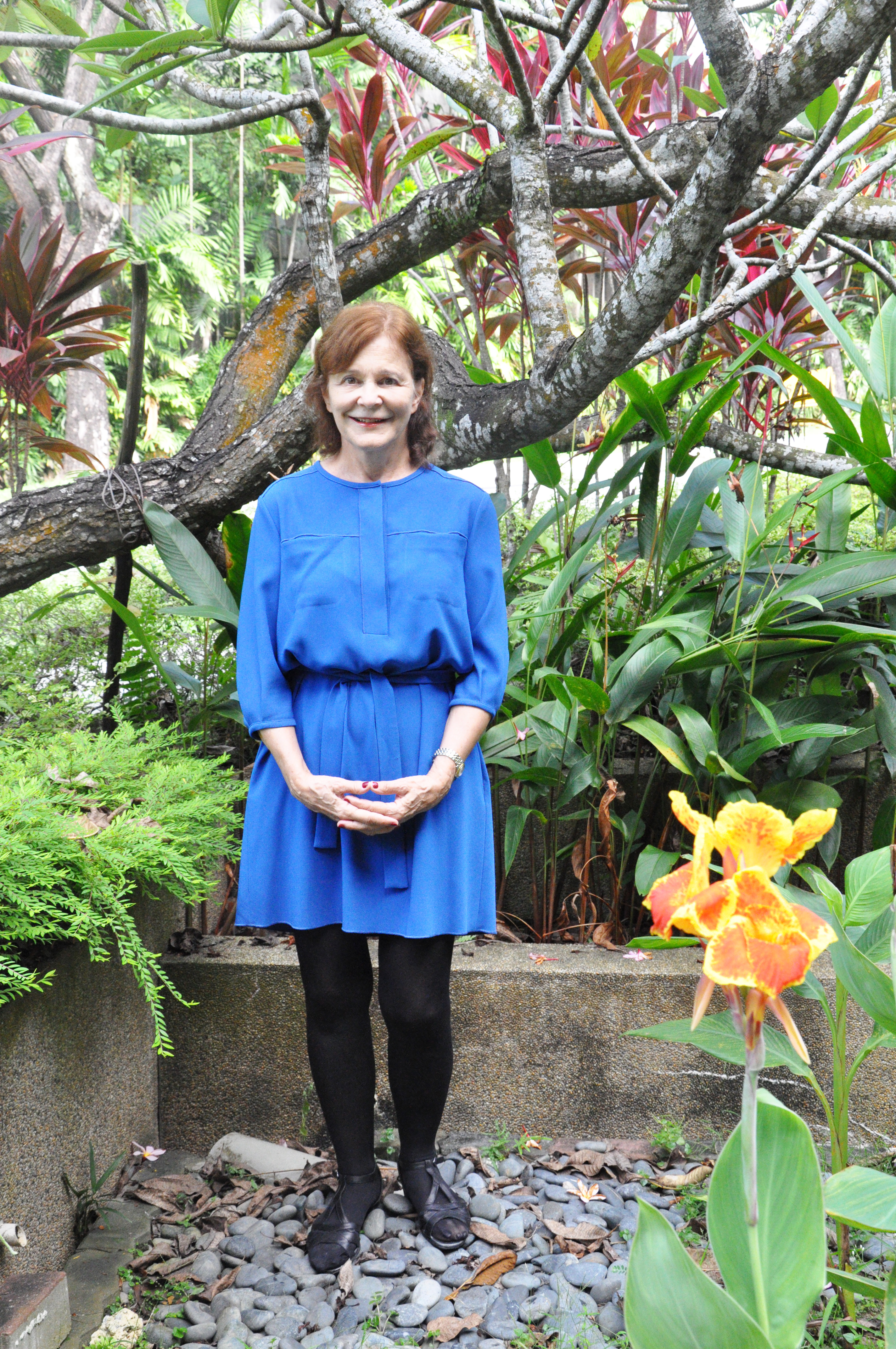
Q. Verbal communication is notoriously difficult for machines. How sophisticated is Nadine’s voice Interface?
Ans. The voice is not really a problem as such. What is more complex is the full understanding of the language, the semantics of the language linked to the visual understanding of a precise situation.
Q. Do you think Nadine is ready to be a part of a family?
Ans. Nadine and similar robots will surely in the future be part of any home. As Nadine and all similar robots are computers, they will be very capable to do a lot of intelligent actions and be our personal assistant.
Q. Do you think Nadine can provide a companionship to old people?
Ans. We are discussing in Singapore about bringing Nadine to elderly homes. We cannot afford a social assistant for each person, it is ways too costly.Then Nadine robot or similar intelligent robots will be there when there is nobody and be a companion for the elderly.
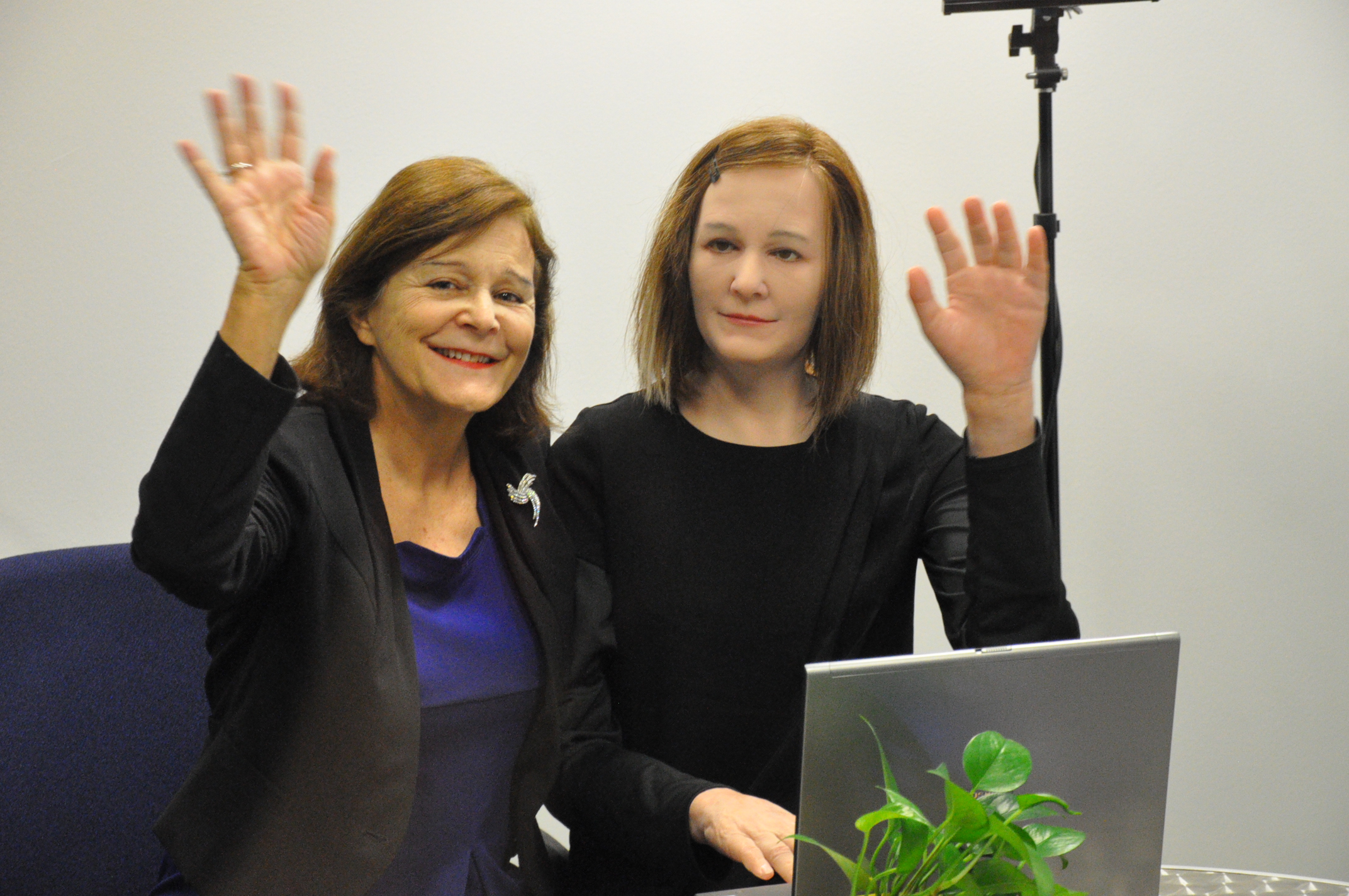
Q. What is the next milestone for Nadine?
Ans. We are defining articulated hands, developing software to allow her to know what are the objects around her, what is their meaning and what to do with them. We also teach her how to grasp objects in a human way so that she will be soon able to play cards or chess with someone.
Q. How do you compare Nadine with Sophia, an AI robot who was even made a citizen of Saudi Arabia?
Ans. Sophia is a fantasy robot and is presented as such. She is mainly a chatbot. The importance is put on a predefined dialog and a seducing attitude. There is no reason to give a nationality to a robot as for roboticians, it is a dummy as if you would give a nationality to a drone or self-driving car which are also robots. Nadine and all similar robots are computers that are embedded in a human shape. It is not because they have a human shape that they are human. They remain mainly computers with software layers like any robot.
Q. What have you learned since developing Nadine?
Ans. That Nadine, even with her nice face and gentle intelligent attitude, is not a human but is a cold machine that feels nothing and has no motivation, no dream, and no suffering. I learn what a human is…at least I am more aware of our heritage of natural capacity and complexity and feeling. I am more sure that our complexity makes us unique and that no machine will ever replace any human.
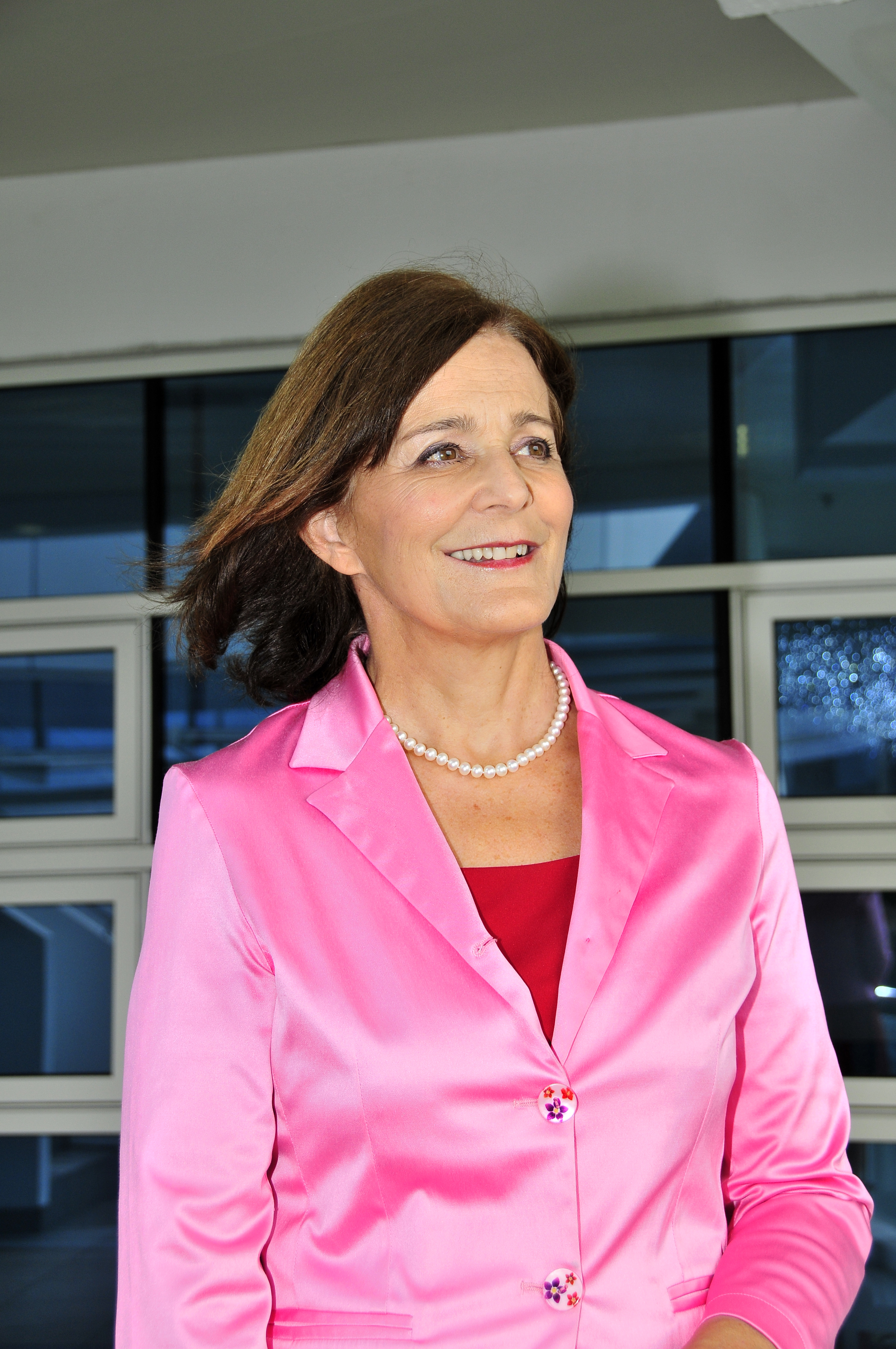
Q. Do you think robots will take the jobs from humans?
Ans. Sure, but there will be a shift of manpower. If I am looking for data science people or roboticians, we can hardly find anybody. In certain new domains, manpower is completely missing. Most people do not have the right skills today.
Q. What does the future hold for social robots and human society?
Ans. The future will see a perfect integration between machine and humans. Social robots will play the role of personal intelligent assistant in each home and also for the elderly.
Q. How soon these robots will be ready to buy in the consumer marketplaces?
Ans. There will be different steps. Sofia kind of robots today and in the future will mainly serve museum or entertainment industry. Nadine kind of robots will be soon sold for business markets as a receptionist. In 5-10 years, we will see them more and more everywhere and there will be various development versions.
Q. What are your developments in the VR sector? We are working on the feeling of presence in VR. Users within a VR environment should have the feeling that it is in the long run as natural as a real environment. We are working on populating VR environment with realistic decors and humans and to interact with them in a very natural way.
Q. Do you think VR headsets/glasses will replace traditional cellphones?
Ans. I really do not think so. VR headset exists since the eighties and even if we have more simple 3d glasses today, these are invasive and the virtual reality we see today is still in its infancy. The modeling of the many realities will take years to simulate and the feeling of presence is still far away from the reality.
Q. Where do you see social robots in the next 10 years?
Ans. As receptionists, in hotel, banks, insurances and as social companions for elderly.













